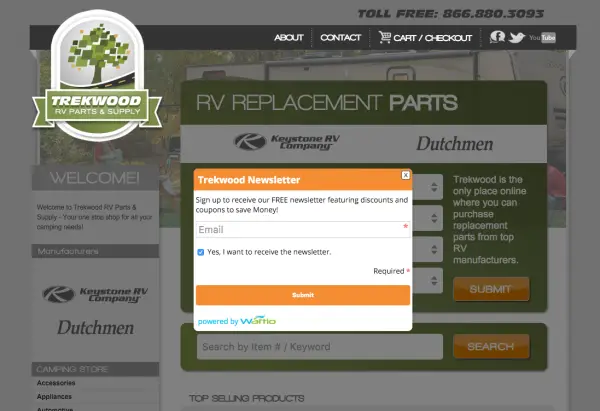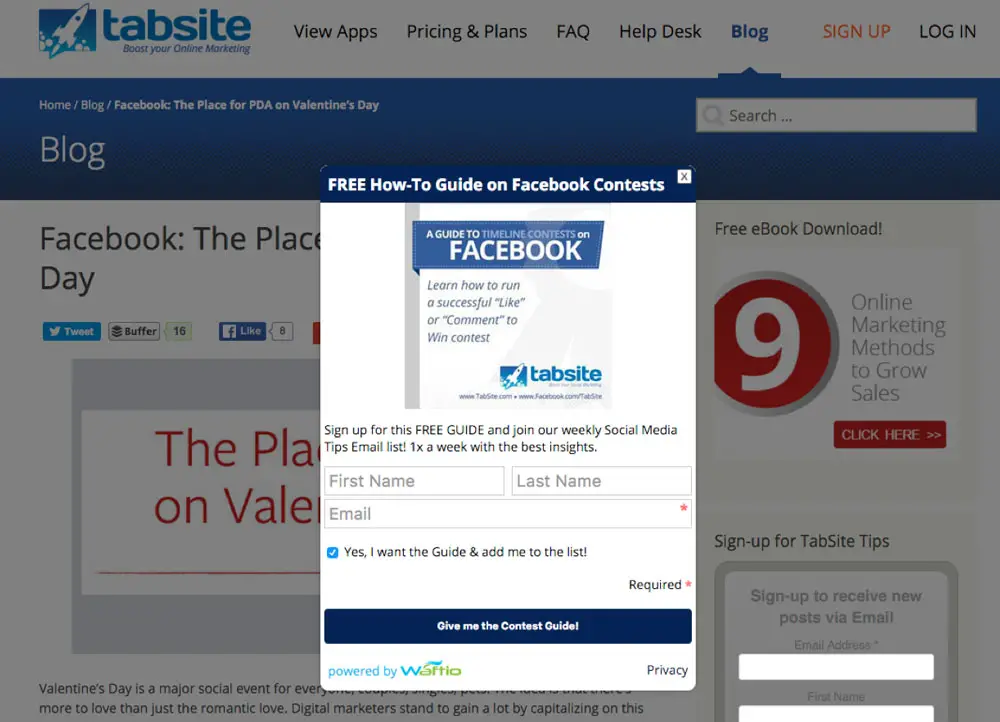The question, "What is a website call to action?", is a frequent question I get.
Beyond the need to know what it is, online marketers need to be using a call to action regularly and effectively on their websites! It's often one of THE most overlooked lead capture and digital marketing components out there.
A call to action is literally a specific tool to get the visitor to a specific action you desire on your site. Is your business using call to actions effectively on your website? Let's look into the "what", "how", and "why" of call to actions for your website. This little piece has tremendous value!
Ready to dive in?
Subscribe: Halftime Mike on iTunes | Android users via RSS | Listen on Stitcher.
I'm glad you asked! The "what" is the starting point. A website call to action is a tool (image linked, widget, form or pop-up form) with the specific goal to move (or call) the website visitor to take a specific action that you want them to take on the site. Typically this is a means to do the following:
The call to action is a needed digital marketing funnel action to move a visitor into the funnel, and to move them from "unknown" to a "known" based on having a email address.
In my book, Game Plan for Social Media Lead Generation, I showcase the digital funnel. It's in the "lead capture" area where you Call to Action takes place. In the Capture area you have reached ideal potential customers and now directed them to your website and this is where the CTA needs to kick in and work for you! See Digital Marketing Funnel image below...
The funnel is a strategy of reaching the right audience, engaging that audience, and then bringing that audience to your website. Once on your sight it's critical that the website Call to Action do it's job as noted of moving the user to take action.
Other benefits a call-to-action helps with are building trust, adding value, and offering related resources....it's a next step and a way of further connecting with the visitor so that when they are ready to purchase, you are top-of-mind!
Blogging is central to the Digital Marketing Funnel strategy as you are producing valuable resource-rich content on your website that you can share on social media and integrate with CTA's. As you use the blog to market your products and services, it’s crucial to include a CTA (call to action) within each post.
Without a CTA to motivate your readers into taking the action you want them to take, your readers won’t take any action at all. It’s simply information on the web they see and then leave. You need to guide your readers to take the action you desire!
Help others learn about website Call to Action...
[Tweet "Recommended! Great tips here on website Call to Actions via @Mike_Gingerich"]
The more pages a visitor goes to on your site, the more they increase time spent, and the more opportunity you have to build trust and rapport. With statistics showing that up to 70% of web visitors don't come back to a website, you've got to capture them and give them some great info that first time!
One of the best ways to convert traffic is with quality content that makes the reader stay on your website. Adding a call to action of related articles to your blog posts will invite readers to read your other posts. All you have to do is link to the related topics using keywords. For instance, the keyword “online marketing” can be linked to other articles on social media marketing, website marketing or email marketing within the blog post.
A simple and clear way to do this is with a titled area “Related Content” and then have a bulleted list with keyword titles linking to other articles on your blog or website.
Email marketing is a powerful strategy to generate sales. Use a call to action to get your website readers added to a email nurture list. One of the best ways to tempt people to subscribe is by giving discounts or access to premium content in exchange for them signing up. For example, if your blog post focuses on photography, you could offer a free eBook with tips about photography to readers who provide their email address.
The call to action should be action-oriented!
It should be brief, concise, clear, and easy to locate. Readers should be forced to see it, but it shouldn’t be so large that it diverts attention from the main content. It should also not ask for lots of information. Keep it simple, like name and email address to access a ebook. Try different call-to-actions including sidebar CTA’s, in-page call-to-actions, and pop-up CTA’s.

Example of a website call to action pop-up

Value adding resource Call to Action pop-up using Waftio.com
So, what are you waiting for? Go look at your website and your last blog post.
How is the call to action integrated on that page? Take a look at my site here, how many CTA's do you see? I use waftio for the main pop-up and I also have the call-out at the end of the post.
ACTION ITEMS:
Please let your Twitter followers know about this podcast.
Simply click here now to post a tweet >>.
If you enjoyed this episode of the Social Media Marketing podcast, please go over to iTunes, leave a rating, write a review and subscribe!
Thank you so much for your support!
I’m an Indiana Hoosier native where basketball is the top sport. Every team heads to the locker room at halftime to evaluate the first half and create an updated plan for the second half. That plan includes adjustments based on reviewing what worked and what didn't. The “halftime” is a key review point where the game stops, the team pulls away to huddle in the locker room away from the fans, and they come out prepared and ready to succeed in the second half.
That’s what this podcast is all about, taking the time to pull away for a bit to evaluate, learn, and set some strategies for your business to succeed in the second half. Join me by subscribing and let me be your “business halftime” to help you find great success going forward!
Subscribe: Halftime Mike on iTunes | Android users via RSS | Listen on Stitcher.
Grab my helpful checklist that includes strategy for social media lead generation. Click image!